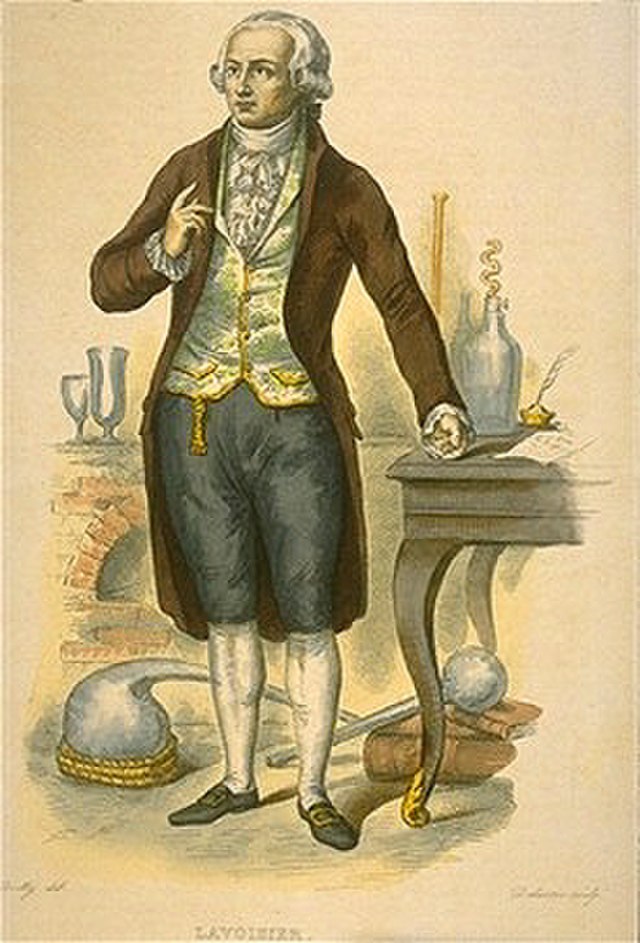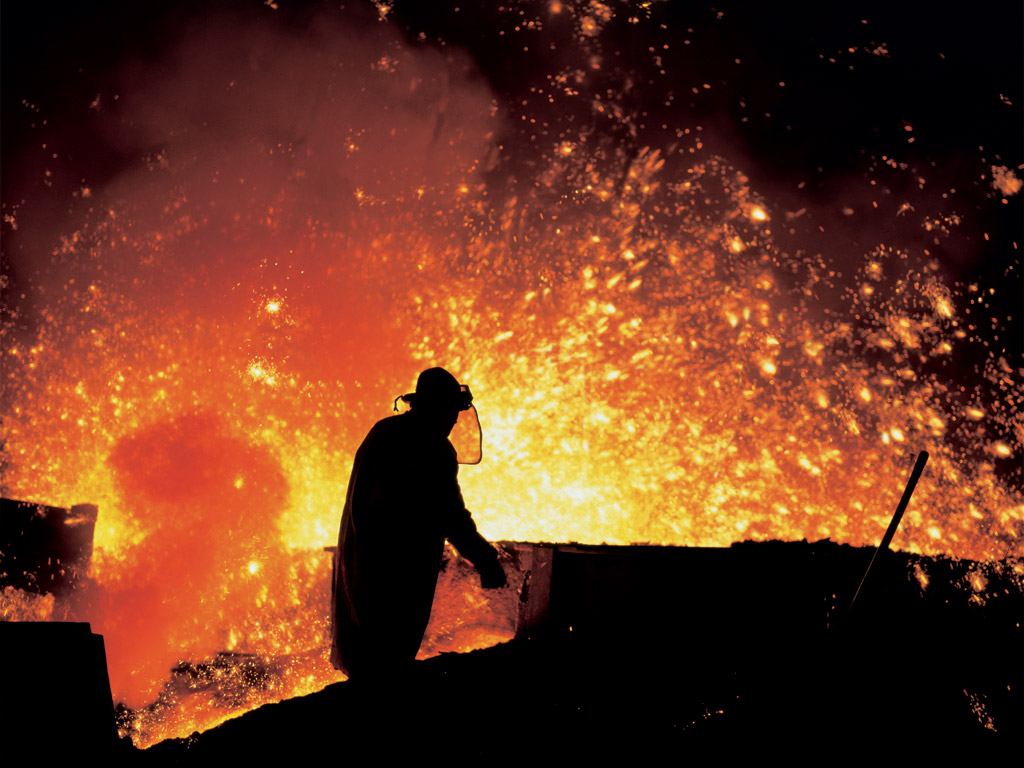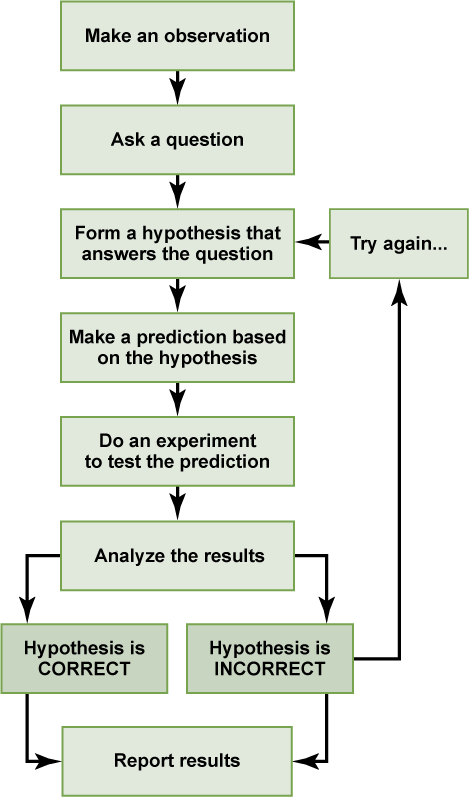1 Overview of Chemistry
LumenLearning
The Study of Chemistry
Chemistry is the study of the composition, structure, properties, and transformation of matter.
LEARNING OBJECTIVES
State the general aims and subject matter of chemistry.
KEY TAKEAWAYS
Key Points
- Chemistry is sometimes called “the central science” because it bridges physics with other natural sciences, such as geology and biology.
- Chemistry is the study of matter and its properties.
- Sub-domains of chemistry include analytical chemistry, biochemistry, inorganic chemistry, organic chemistry, physical chemistry, and biophysical chemistry.
Key Terms
- matter: Something that has mass and takes up space (has volume) and makes up almost everything in the world.
- chemistry: The branch of science that deals with the composition and constitution of substances and the changes that they undergo as a consequence of alterations in the constitution of their molecules.
Chemistry is the study of matter and the chemical reactions between substances. Chemistry is also the study of matter’s composition, structure, and properties. Matter is essentially anything in the world that takes up space and has mass. Chemistry is sometimes called “the central science” because it bridges physics with other natural sciences, such as geology and biology.

History of Chemistry
A basic chemical hypothesis first emerged in Classical Greece when Aristotle defined the four elements of fire, air, earth, and water. It was not until the 17th and 18th centuries when scientists such as Robert Boyle (1627–1691) and Antoine Lavoisier (1743–1794) began to reshape the old alchemical traditions into a rigorous scientific discipline.
As one of the natural sciences, chemistry provides scientists with insight into other physical sciences and powerful analytical tools for engineering applications. The biological sciences and their offshoots, such as psychology, are rooted in biochemistry, and scientists are only now beginning to understand how the different levels of organization influence each other. For example, the basis of modern medicine is the biochemical processes of the human body.
Chemistry and the Natural World
Chemistry has the power to explain innumerable phenomena in the world, from the ordinary to the bizarre. Why does iron rust? What makes propane such an efficient, clean-burning fuel? How can soot and diamond be so different in appearance yet so chemically similar? Chemistry has the answer to these questions and many more. Understanding chemistry is the key to understanding the world as we know it.

Different Branches of Chemistry
The study of chemistry can be organized into distinct branches that emphasize subsets of chemical concepts. Analytical chemistry seeks to determine the exact chemical compositions of substances. Biochemistry is the study of chemicals found in living things (such as DNA and proteins). Inorganic chemistry studies substances that do not contain carbon. Organic chemistry studies carbon-based substances. Physical chemistry is the study of the physical properties of chemicals. Biophysical chemistry is the application of physical chemistry in a biological context.
The Scientific Method
The scientific method is a process by which observations are questioned, hypotheses are created and tested, and the results are analyzed.
LEARNING OBJECTIVES
Discuss hypotheses and the components of a scientific experiment as part of the scientific method.
KEY TAKEAWAYS
Key Points
- In the scientific method, observations lead to questions that require answers.
- In the scientific method, the hypothesis is a testable statement proposed to answer a question.
- In the scientific method, experiments (often with controls and variables) are devised to test hypotheses.
- In the scientific method, analysis of the results of an experiment will lead to the hypothesis being accepted or rejected.
Key Terms
- scientific method: A way of discovering knowledge based on making falsifiable predictions (hypotheses), testing them, and developing theories based on collected data.
- hypothesis: An educated guess that usually is found in an “if…then…” format.
- control group: A group that contains every feature of the experimental group except it is not given the manipulation that is hypothesized.
Biologists study the living world by posing questions about it and seeking science-based responses. This approach is common to other sciences as well and is often referred to as the scientific method. The scientific method was used even in ancient times, but it was first documented by England’s Sir Francis Bacon (1561–1626), who set up inductive methods for scientific inquiry. The scientific method can be applied to almost all fields of study as a logical, rational, problem-solving method.

The scientific process typically starts with an observation (often a problem to be solved) that leads to a question. Let’s think about a simple problem that starts with an observation and apply the scientific method to solve the problem. A teenager notices that his friend is really tall and wonders why. So his question might be, “Why is my friend so tall?”

Proposing a Hypothesis
Recall that a hypothesis is an educated guess that can be tested. Hypotheses often also include an explanation for the educated guess. To solve one problem, several hypotheses may be proposed. For example, the student might believe that his friend is tall because he drinks a lot of milk. So his hypothesis might be, “If a person drinks a lot of milk, then they will grow to be very tall because milk is good for your bones.” Generally, hypotheses have the format, “If…then…” Keep in mind that there could be other responses to the question; therefore, other hypotheses may be proposed. A second hypothesis might be, “If a person has tall parents, then they will also be tall because they have the genes to be tall.”
Once a hypothesis has been selected, the student can make a prediction. A prediction is similar to a hypothesis, but it is truly a guess. For instance, they might predict that their friend is tall because he drinks a lot of milk.
Testing a Hypothesis
A valid hypothesis must be testable. It should also be falsifiable, meaning that it can be disproven by experimental results. Importantly, science does not claim to “prove” anything because scientific understandings are always subject to modification with further information. This step—openness to disproving ideas—is what distinguishes sciences from nonsciences. The presence of the supernatural, for instance, is neither testable nor falsifiable. To test a hypothesis, a researcher will conduct one or more experiments designed to eliminate one or more of the hypotheses. Each experiment will have one or more variables and one or more controls. A variable is any part of the experiment that can vary or change during the experiment. The control group contains every feature of the experimental group except it is not given the manipulation that is hypothesized. For example, a control group could be a group of varied teenagers who did not drink milk and they could be compared to the experimental group, a group of varied teenagers who did drink milk. Thus, if the results of the experimental group differ from the control group, the difference must be due to the hypothesized manipulation rather than some outside factor. To test the first hypothesis, the student would find out if drinking milk affects height. If drinking milk has no effect on height, then there must be another reason for the height of the friend. To test the second hypothesis, the student could check whether or not his friend has tall parents. Each hypothesis should be tested by carrying out appropriate experiments. Be aware that rejecting one hypothesis does not determine whether or not the other hypotheses can be accepted. It simply eliminates one hypothesis that is not valid. Using the scientific method, the hypotheses that are inconsistent with experimental data are rejected.
While this “tallness” example is based on observational results, other hypotheses and experiments might have clearer controls. For instance, a student might attend class on Monday and realize she had difficulty concentrating on the lecture. One hypothesis to explain this occurrence might be, “If I eat breakfast before class, then I am better able to pay attention.” The student could then design an experiment with a control to test this hypothesis.
The scientific method may seem too rigid and structured. It is important to keep in mind that although scientists often follow this sequence, there is flexibility. Many times science does not operate in a linear fashion. Instead, scientists continually draw inferences and make generalizations, finding patterns as their research proceeds. Scientific reasoning is more complex than the scientific method alone suggests.
LICENSES AND ATTRIBUTIONS
CC LICENSED CONTENT, SHARED PREVIOUSLY
- Curation and Revision. Provided by: Boundless.com. License: CC BY-SA: Attribution-ShareAlike
CC LICENSED CONTENT, SPECIFIC ATTRIBUTION
- What is chemistry?. Provided by: Steve Lower’s Website. Located at: http://www.chem1.com/acad/webtext/pre/chemsci.html. License: CC BY-SA: Attribution-ShareAlike
- General Chemistry/“Introduction.” Provided by: Wikibooks. Located at: http://en.wikibooks.org/wiki/General_Chemistry/Introduction. License: CC BY-SA: Attribution-ShareAlike
- Chemistry. Provided by: Wikipedia. Located at: http://en.wikipedia.org/wiki/Chemistry. License: CC BY-SA: Attribution-ShareAlike
- alchemy. Provided by: Wiktionary. Located at: http://en.wiktionary.org/wiki/alchemy. License: CC BY-SA: Attribution-ShareAlike
- chemistry. Provided by: Wiktionary. Located at: http://en.wiktionary.org/wiki/chemistry. License: CC BY-SA: Attribution-ShareAlike
- Antoine%20Lavoisier%20color. Provided by: Wikimedia. Located at: http://en.wikipedia.org/wiki/File:Antoine_lavoisier_color.jpg. License: Public Domain: No Known Copyright
- General Chemistry/”Introduction.” Provided by: Wikibooks. Located at: http://en.wikibooks.org/wiki/General_Chemistry/Introduction. License: CC BY-SA: Attribution-ShareAlike
- scientific method. Provided by: Wiktionary. Located at: http://en.wiktionary.org/wiki/scientific_method. License: CC BY-SA: Attribution-ShareAlike
- OpenStax College, Biology. October 16, 2013. Provided by: OpenStax CNX. Located at: http://cnx.org/content/m44387/latest/?collection=col11448/latest. License: CC BY: Attribution
- Antoine%20Lavoisier%20color. Provided by: Wikimedia. Located at: http://en.wikipedia.org/wiki/File:Antoine_lavoisier_color.jpg. License: Public Domain: No Known Copyright
- General Chemistry/”Introduction.” Provided by: Wikibooks. Located at: http://en.wikibooks.org/wiki/General_Chemistry/Introduction. License: CC BY-SA: Attribution-ShareAlike
- OpenStax College, The Science of Biology. October 16, 2013. Provided by: OpenStax CNX. Located at: http://cnx.org/content/m44387/latest/Figure_01_01_05.png. License: CC BY: Attribution
- OpenStax College, The Science of Biology. October 16, 2013. Provided by: OpenStax CNX. Located at: http://cnx.org/content/m44387/latest/Figure_01_01_04.jpg. License: CC BY: Attribution
This chapter is an adaptation of the chapter “Overview of Chemistry” in Boundless Chemistry by LumenLearning and is licensed under a CC BY-SA 4.0 license.
Something that has mass and takes up space (has volume) and makes up almost everything in the world.
The branch of science that deals with the composition and constitution of substances and the changes that they undergo as a consequence of alterations in the constitution of their molecules.
a way of discovering knowledge based on making falsifiable predictions (hypotheses), testing them, and developing theories based on collected data
an educated guess that usually is found in an “if…then…” format
a group that contains every feature of the experimental group except it is not given the manipulation that is hypothesized

